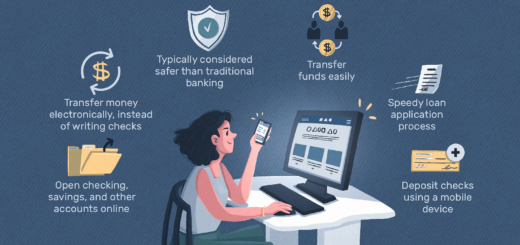The power of social media advertising
Are you looking to maximize the reach and impact of your marketing efforts? Look no further than the power of social media advertising. In today’s digitally connected world, social media has become an essential tool for businesses to connect with their target audience, build brand awareness, and drive conversions. From Facebook marketing to Instagram advertising and Twitter promotion, social media platforms offer a range of options to help you reach your marketing goals. By harnessing the power of social media advertising, you can tap into a vast and engaged audience, connect with potential customers, and take your marketing strategy to the next level.
Search Engine Optimization (SEO)
Search Engine Optimization (SEO) is the practice of optimizing a website to improve its visibility and ranking on search engine results pages (SERPs). SEO plays a crucial role in driving organic traffic to a website, making it an essential strategy for businesses looking to increase their online presence.
On-page SEO
On-page SEO focuses on optimizing individual web pages to improve their search engine ranking and visibility. This involves optimizing various elements such as content, title tags, meta descriptions, headers, images, and URL structure. By strategically incorporating relevant keywords and providing valuable and engaging content, on-page SEO helps search engines understand the relevance and value of a webpage.
Off-page SEO
Off-page SEO refers to optimizing factors outside of a website to improve its search engine ranking. This mainly involves building high-quality backlinks from credible and authoritative websites. Off-page SEO techniques include social bookmarking, social media engagement, guest blogging, influencer outreach, and online directory submissions. The goal is to increase the website’s domain authority and credibility, signaling to search engines that it is a valuable and trustworthy source of information.
SEO Tools
SEO tools are software programs or online platforms that help website owners and SEO professionals analyze and optimize their websites for better search engine ranking. These tools provide valuable insights into keywords, backlinks, website performance, competitor analysis, and other SEO metrics. Popular SEO tools include Google Search Console, Moz, SEMrush, Ahrefs, and Screaming Frog. These tools enable users to identify areas of improvement, track keyword rankings, monitor backlinks, and ultimately enhance their overall SEO strategy.
Local SEO
Local SEO is the process of optimizing a website to target specific geographic locations. This is especially important for businesses that rely on local customers, such as restaurants, retail stores, medical practices, or service-based businesses. Local SEO involves optimizing the website’s content, meta tags, and citations to align with local search queries. It also involves creating and managing a Google My Business profile, obtaining customer reviews, and getting listed on local directories. By implementing effective local SEO strategies, businesses can increase their visibility in local search results and attract more relevant traffic.
Search Engine Marketing (SEM)
Search Engine Marketing (SEM) is a paid advertising strategy that aims to promote websites and increase visibility on search engine results pages. While SEO focuses on organic search results, SEM utilizes paid search advertising to drive targeted traffic to a website.
Google Ads
Google Ads, previously known as Google AdWords, is a popular SEM platform that allows businesses to create and manage pay-per-click (PPC) advertising campaigns. With Google Ads, advertisers can bid on specific keywords and create compelling ad copy to appear on relevant search results pages. This enables businesses to target their audience based on demographics, interests, and search intent, maximizing the impact of their advertising efforts.
Bing Ads
Bing Ads is another SEM platform that enables businesses to display their ads on Bing and Yahoo search results. While Google dominates the search engine market, Bing still holds a significant market share, making Bing Ads a valuable platform for businesses looking to reach a wider audience. Similar to Google Ads, advertisers can bid on keywords and create persuasive ad campaigns to attract relevant traffic.
Paid Search Advertising
Paid search advertising, commonly known as pay-per-click (PPC) advertising, is a form of online advertising where advertisers pay each time a user clicks on their ad. This model allows businesses to drive highly targeted traffic to their website, as ads are displayed to users searching for specific keywords or phrases. PPC advertising platforms, such as Google Ads and Bing Ads, offer various targeting options, ad formats, and bidding strategies to help advertisers reach their desired audience effectively.
Ad Campaign Management
Ad campaign management involves the planning, creation, execution, monitoring, and optimization of paid advertising campaigns. Effective campaign management requires careful research and analysis to identify the target audience, select relevant keywords, create compelling ad copy, set appropriate budgets, and track campaign performance. By continuously monitoring and optimizing campaigns, businesses can maximize their return on investment (ROI) and improve the effectiveness of their advertising efforts across different platforms.
Social Media Marketing
Social Media Marketing involves using social media platforms to promote products, services, or content. With billions of active users, social media platforms provide businesses with an opportunity to connect and engage with their target audience, build brand awareness, and drive traffic to their website.
Facebook Marketing
Facebook is the largest social media platform, with over 2 billion monthly active users. Facebook marketing allows businesses to create a professional page, engage with followers through posts, photos, videos, and host events. Facebook also offers comprehensive targeting options for advertising campaigns, enabling businesses to reach their desired audience based on demographics, interests, locations, and behaviors.

Instagram Advertising
Instagram, owned by Facebook, has become a popular platform for sharing visual content. It offers businesses the opportunity to showcase their products or services through images and videos. Instagram ads can be displayed in users’ newsfeeds or stories, helping businesses reach their target audience with visually appealing and engaging content. With advanced targeting options and the ability to create visually stunning ads, Instagram advertising can help businesses increase brand visibility and drive engagement.
Twitter Promotion
Twitter is a microblogging platform that allows users to share short posts, known as tweets. Twitter promotion involves creating a business profile, engaging with followers through tweets, retweets, and replies, and utilizing hashtags to increase visibility. Businesses can also run Twitter ads to amplify their reach and promote specific messages or campaigns. With its real-time nature and expansive user base, Twitter provides businesses with an effective platform for brand promotion and customer engagement.
LinkedIn Marketing Strategy
LinkedIn is a professional networking platform that offers businesses the opportunity to connect with industry professionals, build brand authority, and generate leads. LinkedIn marketing involves creating a business page, publishing informative and industry-specific content, participating in relevant groups and discussions, and utilizing LinkedIn advertising options. With its focus on professional connections and targeted advertising options, LinkedIn is particularly valuable for B2B businesses looking to reach decision-makers and influencers.
Content Marketing
Content Marketing focuses on creating and distributing valuable, relevant, and consistent content to attract and engage a target audience. It aims to drive profitable customer action by providing valuable information, addressing pain points, and building brand trust and loyalty.
Blog Content Strategy
A blog content strategy involves planning and creating valuable and engaging blog posts to attract and retain readers. It starts with identifying the target audience and understanding their needs and interests. By conducting keyword research and analyzing popular topics, businesses can create a content calendar and develop blog posts that provide valuable insights, answer common questions, or address industry trends. A well-executed blog content strategy can help businesses increase website traffic, improve search engine rankings, and establish thought leadership.
Content Creation Tools
Content creation tools help businesses streamline their content creation process and enhance the quality and efficiency of their content production. These tools range from writing and editing platforms to graphic design software, project management tools, and content planning resources. Popular content creation tools include Grammarly, Canva, Trello, Buzzsumo, and CoSchedule. By utilizing these tools, businesses can collaborate effectively, streamline their workflow, and produce high-quality content that resonates with their target audience.
Video Content Marketing
Video content marketing involves creating and distributing video content to engage and captivate the target audience. Videos can be in the form of tutorials, product demonstrations, testimonials, or entertaining content that aligns with the brand image. Platforms such as YouTube, Vimeo, and social media sites provide businesses with an opportunity to reach a wider audience through video content. With the growing popularity of video consumption, incorporating video content into the marketing strategy can significantly enhance brand visibility and engagement.
Infographic Promotion
Infographic promotion involves creating and sharing visual representations of data, information, or concepts. Infographics are visually appealing and make complex information more accessible and engaging. They can be shared on websites, social media platforms, or used in presentations and marketing materials. Infographic promotion allows businesses to communicate information effectively, capture the audience’s attention, and drive engagement. Platforms such as Canva and Piktochart provide users with intuitive tools to create professional-looking infographics without design expertise.
Email Marketing
Email Marketing is a digital marketing strategy that involves sending targeted emails to a group of individuals with the intent to promote products, services, or content. It is a cost-effective and efficient way to reach a large audience, nurture relationships, and drive conversions.
Email Automation
Email automation involves setting up a series of pre-scheduled emails that are triggered by specific actions or events. This allows businesses to send personalized and timely emails to subscribers without manual intervention. Automated emails can be used for welcome series, abandoned cart reminders, birthday offers, or nurturing leads through a sales funnel. By using email automation, businesses can deliver relevant content to specific segments of their audience, increase engagement, and drive conversions.
Email Campaign Optimization
Email campaign optimization involves analyzing and fine-tuning email campaigns to improve their effectiveness and achieve desired outcomes. This includes conducting A/B testing to optimize subject lines, email copy, and call-to-action buttons, optimizing email design for mobile devices, segmenting the audience based on preferences and behaviors, and monitoring key performance metrics such as open rates, click-through rates, and conversions. By continuously optimizing email campaigns, businesses can enhance engagement, increase conversions, and maximize the return on their email marketing investment.

Email Marketing Tools
Email marketing tools provide businesses with the necessary resources to plan, execute, and analyze email marketing campaigns. These tools typically offer features such as email templates, contact management, list segmentation, email scheduling, A/B testing, and campaign analytics. Popular email marketing tools include Mailchimp, Constant Contact, Campaign Monitor, and HubSpot. By leveraging these tools, businesses can streamline their email marketing efforts, personalize their communication, and improve overall campaign performance.
Newsletter Best Practices
Newsletters are a powerful email marketing tool that allows businesses to provide valuable content, updates, and promotions to their subscribers. To ensure the success of a newsletter campaign, it’s essential to follow best practices such as crafting attention-grabbing subject lines, providing valuable and engaging content, highlighting promotions or exclusive offers, optimizing email design for readability and mobile devices, and including clear and compelling call-to-action buttons. By adhering to these best practices, businesses can build customer loyalty, drive website traffic, and increase conversions through newsletter campaigns.
Digital Analytics
Digital Analytics involves collecting, analyzing, and interpreting data from digital marketing efforts to measure performance, identify trends, and make data-driven decisions. By tracking key metrics and understanding user behavior, businesses can optimize their marketing strategies and improve overall performance.
Google Analytics Tips
Google Analytics is a powerful tool that provides businesses with valuable insights into website performance, user behavior, and marketing effectiveness. To fully utilize Google Analytics, businesses can follow tips such as setting up goals and conversion tracking, utilizing advanced segments to analyze specific user groups, analyzing user flow and behavior to identify conversion bottlenecks, and using custom dashboards and reports to track key metrics. By leveraging the full capabilities of Google Analytics, businesses can gain a deeper understanding of their audience and make informed decisions to optimize their digital marketing efforts.
Data-Driven Marketing
Data-driven marketing involves utilizing data and analytics to develop marketing strategies, make informed decisions, and optimize campaigns. It involves collecting and analyzing data from various sources, such as website analytics, customer data, social media metrics, and ad campaign performance. By leveraging data insights, businesses can identify patterns, trends, and opportunities, segment their audience, personalize their communication, and allocate resources effectively. Data-driven marketing enables businesses to optimize their marketing efforts, increase ROI, and deliver a more personalized and relevant customer experience.
Web Analytics Tools
Web analytics tools provide businesses with the ability to track, analyze, and report on website performance and user behavior. These tools offer valuable insights into metrics such as website traffic, page views, bounce rates, conversion rates, and user demographics. Popular web analytics tools, in addition to Google Analytics, include Adobe Analytics, Hotjar, and Mixpanel. By utilizing web analytics tools, businesses can understand how users interact with their website, identify areas for improvement, and optimize their digital marketing strategies accordingly.
Analytics Reporting
Analytics reporting involves creating and presenting comprehensive reports that communicate key metrics, trends, and insights to stakeholders. These reports can cover an array of metrics, such as website traffic, conversions, user behavior, ad campaign performance, and ROI. Effective analytics reporting requires presenting data in a visually appealing and understandable format, highlighting trends, and providing actionable insights or recommendations. By delivering clear and concise analytics reports, businesses can measure the impact of their marketing efforts, make data-driven decisions, and identify areas for improvement.
E-commerce Marketing
E-commerce marketing focuses on promoting and selling products or services online. It involves utilizing various digital marketing strategies to drive website traffic, increase conversions, and enhance the overall online shopping experience.
Online Store Optimization
Online store optimization involves optimizing various elements of an e-commerce website to improve its visibility, user experience, and conversion rates. This includes optimizing product descriptions and titles, simplifying the checkout process, enhancing website speed and performance, optimizing images for fast loading times, and implementing effective navigation and search functionality. By optimizing the online store, businesses can provide a seamless shopping experience, improve search engine rankings, and increase customer satisfaction and conversions.
E-commerce SEO
E-commerce SEO aims to improve the organic search visibility and ranking of an e-commerce website. It involves optimizing product pages, category pages, and other relevant web pages by integrating relevant keywords, adding unique product descriptions, optimizing meta tags, implementing schema markup, and improving website speed and performance. E-commerce SEO helps businesses attract targeted organic traffic, increase visibility on search engine results pages, and ultimately drive more sales.
Product Listing Ads
Product Listing Ads (PLAs) are visual advertisements displayed on search engine results pages that highlight specific products and include relevant information such as product titles, prices, and images. These ads are typically managed through Google Merchant Center, and businesses can use Google Ads to create and optimize PLA campaigns. By showcasing products directly in search results, PLAs help businesses increase visibility, attract qualified traffic, and drive conversions.
Cart Abandonment Strategies
Cart abandonment occurs when a customer adds products to their online shopping cart but leaves the website without completing the purchase. Cart abandonment strategies aim to re-engage these potential customers and encourage them to complete their purchase. Strategies include sending targeted email reminders with personalized offers, providing live chat support to address any concerns, offering incentives such as free shipping or discounts, simplifying the checkout process, and implementing exit-intent pop-ups. By implementing effective cart abandonment strategies, businesses can recover lost sales and improve overall conversion rates.
Influencer Marketing
Influencer Marketing involves collaborating with influential individuals online to promote products or services to their followers. Influencers can provide businesses with access to a targeted audience and help build brand credibility and trust.
Influencer Collaborations
Influencer collaborations involve partnering with influencers to create content or promote products or services. This can take the form of sponsored posts, product reviews, giveaways, or influencer takeovers. The key is to identify influencers who align with the brand’s values, target audience, and marketing objectives. By leveraging the influencer’s reach and influence, businesses can increase brand awareness, reach a wider audience, and generate authentic engagement and conversions.
Influencer Outreach
Influencer outreach involves identifying and reaching out to relevant influencers to initiate a collaboration. This requires conducting thorough research to find influencers who align with the brand and have an engaged and authentic following. Influencer outreach can be done through direct messages on social media, email pitches, or utilizing influencer marketing platforms. By building genuine relationships with influencers and offering value in return, businesses can establish long-term partnerships and effectively leverage influencer marketing.
Micro-Influencers
Micro-influencers are individuals with a smaller but highly engaged following on social media. They typically have a niche or specific interest focus, making them attractive for brands targeting specific audiences. Collaborating with micro-influencers can be more cost-effective than working with high-profile influencers and can yield higher engagement rates and authenticity. By leveraging the influence of micro-influencers, businesses can reach a highly targeted audience and create meaningful connections with potential customers.
Influencer Marketing Platforms
Influencer marketing platforms facilitate the collaboration between brands and influencers. These platforms provide a database of influencers, offering insights into their audience demographics, engagement rates, and previous collaborations. They typically offer features such as campaign management, influencer search and outreach, performance tracking, and payment processing. Popular influencer marketing platforms include AspireIQ, Upfluence, and Grin. By utilizing these platforms, businesses can streamline the influencer marketing process and connect with relevant influencers more effectively.
Social Media Advertising
Social media advertising involves promoting products, services, or content on social media platforms through paid advertising. It offers businesses the opportunity to reach their target audience, increase brand awareness, drive traffic, and generate leads.
Social media advertising platforms, such as Facebook Ads Manager, Twitter Ads, and LinkedIn Ads, provide businesses with comprehensive targeting options, ad formats, and bidding strategies. By utilizing these platforms effectively, businesses can create highly targeted advertising campaigns that resonate with their audience, resulting in increased brand visibility, engagement, and conversions.
In conclusion, digital marketing encompasses various strategies and techniques to help businesses reach their target audience, increase brand visibility, and drive conversions. From search engine optimization and marketing to social media advertising, content marketing, email marketing, digital analytics, e-commerce marketing, and influencer marketing, each strategy plays a unique role in a comprehensive digital marketing strategy. By understanding and implementing these strategies effectively, businesses can maximize their online presence and achieve their marketing goals in today’s digital-driven world.

















It's great that you talked about how business insurance can provide financial protection against unexpected events and help ensure the…
I like that you mentioned how business insurance is essential for protecting your bottom line and the long-term viability of…